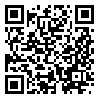1. Butt JH, Franzmann U, Kruuse C. Endothelial function in migraine with aura–a systematic review. Headache: J Head Face Pain. 2015;55(1):35-54. [
DOI:10.1111/head.12494] [
PMID]
2. Ashina M. Migraine. N Engl J Med. 2020;383(19):1866-76. [
DOI:10.1056/NEJMra1915327] [
PMID]
3. Stovner LJ, Hagen K, Linde M, Steiner TJ. The global prevalence of headache: an update, with analysis of the influences of methodological factors on prevalence estimates. Headache: J Head Face Pain. 2022;23(1):34. [
DOI:10.1186/s10194-022-01402-2] [
PMID] [
PMCID]
4. Silberstein SD. Migraine. Lancet. 2004;363(9406):381-91. [
DOI:10.1016/S0140-6736(04)15440-8] [
PMID]
5. Lipton RB, Silberstein SD. Episodic and chronic migraine headache: breaking down barriers to optimal treatment and prevention. Headache: J Head Face Pain. 2015;55:103-22. [
DOI:10.1111/head.12505_2] [
PMID]
6. Pavlovic JM, Buse DC, Sollars CM, Haut S, Lipton RB. Trigger factors and premonitory features of migraine attacks: summary of studies. Headache: J Head Face Pain. 2014;54(10):1670-9. [
DOI:10.1111/head.12468] [
PMID]
7. VanderPluym JH, Singh RB, Urtecho M, Morrow AS, Nayfeh T, Roldan VD, et al. Acute treatments for episodic migraine in adults: a systematic review and meta-analysis. JAMA. 2021;325(23):2357-69. [
DOI:10.1001/jama.2021.7939] [
PMID] [
PMCID]
8. Wei S, Lv H, Yang D, Zhang L, Li X, Ning Y, et al. Drug-related side effects and adverse reactions in the treatment of migraine: a bibliometric and visual analysis. Front Neurol. 2024;15:1342111. [
DOI:10.3389/fneur.2024.1342111] [
PMID] [
PMCID]
9. Silberstein SD. Preventive migraine treatment. Contin Lifelong Learn Neurol. 2015;21(4):973-89. [
DOI:10.1212/CON.0000000000000199] [
PMID] [
PMCID]
10. Magis D, Schoenen J. Advances and challenges in neurostimulation for headaches. Lancet Neurol. 2012;11(8):708-19. [
DOI:10.1016/S1474-4422(12)70139-4] [
PMID]
11. Chou DE, Shnayderman Yugrakh M, Winegarner D, Rowe V, Kuruvilla D, Schoenen J. Acute migraine therapy with external trigeminal neurostimulation (ACME): A randomized controlled trial. Cephalalgia. 2019;39(1):3-14. [
DOI:10.1177/0333102418811573] [
PMID] [
PMCID]
12. Schoenen J, Vandersmissen B, Jeangette S, Herroelen L, Vandenheede M, Gérard P, et al. Migraine prevention with a supraorbital transcutaneous stimulator: a randomized controlled trial. Neurology. 2013;80(8):697-704. [
DOI:10.1212/WNL.0b013e3182825055] [
PMID]
13. Russo A, Tessitore A, Esposito F, Di Nardo F, Silvestro M, Trojsi F, et al. Functional Changes of the Perigenual Part of the Anterior Cingulate Cortex after External Trigeminal Neurostimulation in Migraine Patients. Front Neurol. 2017;8:282. [
DOI:10.3389/fneur.2017.00282] [
PMID] [
PMCID]
14. Magis D, D’Ostilio K, Thibaut A, De Pasqua V, Gerard P, Hustinx R, et al. Cerebral metabolism before and after external trigeminal nerve stimulation in episodic migraine. Cephalalgia. 2017;37(9):881-91. [
DOI:10.1177/0333102416656118] [
PMID] [
PMCID]
15. Headache Classification Subcommittee of the International Headache Society. The International Classification of Headache Disorders: 2nd edition. cephalalgia. 2004;24(1):9-160.
16. Thorsteinson VH, Haczkewicz KM, Gallant NL. Gender-based discrimination and its influence on mental health symptoms among people living with and without migraine: A case-control study. J Health Psychol. 2025;(Epub ahead of print):13591053251317069. [
DOI:10.1177/13591053251317069] [
PMID]
17. Coppola G, Magis D, Casillo F, Sebastianelli G, Abagnale C, Cioffi E, Di et al. Neuromodulation for chronic daily headache. Curr Pain Headache Rep. 2022;26(3):267-78. [
DOI:10.1007/s11916-022-01025-x] [
PMID] [
PMCID]
18. Chou DE, Gross GJ, Casadei CH, Yugrakh MS. External Trigeminal Nerve Stimulation for the Acute Treatment of Migraine: Open-Label Trial on Safety and Efficacy. Neuromodulation. 2017;20(7):678-83. [
DOI:10.1111/ner.12623] [
PMID]
19. Russo A, Tessitore A, Conte F, Marcuccio L, Giordano A, Tedeschi G. Transcutaneous supraorbital neurostimulation in “de novo” patients with migraine without aura: the first Italian experience. J Headache Pain. 2015;16:69. [
DOI:10.1186/s10194-015-0551-3] [
PMID] [
PMCID]
20. Riederer F, Penning S, Schoenen J. Transcutaneous Supraorbital Nerve Stimulation (t-SNS) with the Cefaly(®) Device for Migraine Prevention: A Review of the Available Data. Pain Ther. 2015;4(2):135-47. [
DOI:10.1007/s40122-015-0039-5] [
PMID] [
PMCID]
21. Lipton RB, Buse DC, Serrano D, Holland S, Reed ML. Examination of Unmet Treatment Needs Among Persons With Episodic Migraine: Results of the A merican M igraine P revalence and P revention (AMPP) Study. Headache: J Head Face Pain. 2013;53(8):1300-11. [
DOI:10.1111/head.12154] [
PMID]








